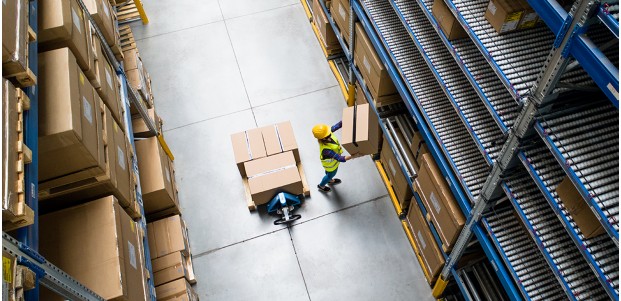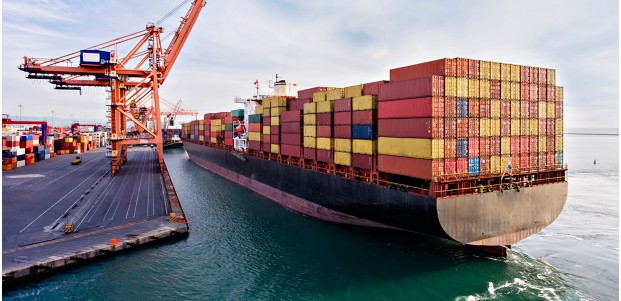“The global pandemic—the last two years—really showed how critical supply chains are, how interconnected the world is, and how important it is to coordinate on vulnerabilities that we’ve seen,” Leonard said.
To demonstrate the impact of this statement, panelists representing the EU, U.S., and the semiconductor industry shared how COVID-19 exposed bottlenecks in the global trading system and why the supply chain will never be the same.
Global Bottlenecks (Dude, How Did We Get Here?)
Supply chain constraints have been a looming issue in the global market for years, but before we ran out of toilet paper in March 2020, most Americans didn’t dwell on supply chain issues. The pandemic simply exposed the existing cracks in the supply chain amidst changing demands, and we’ve encountered obstacles ever since.

Representing the semiconductor industry, panelist Luis Martinez-Amago, Deputy CEO of Technicolor and President of the Connected Home Division explained why the global semiconductor shortage is complicated and has two key obstacles:
○ When there is a rise in demand, bottlenecks become most apparent in the form of crowded ports and transportation constraints. These temporary bottlenecks need to be met with increased flexibility and direct solutions by the industry.
○ These challenges are a bit more nuanced and complex. Over the past 20 years, many companies have begun outsourcing production overseas to increase efficiency and reduce costs. Over time, this has led to a fragmented supply chain.
“Structural challenges are driving us to a state of dependency, and a lack of flexibility that, in my opinion, we need to address,” emphasized Martinez-Amago.
At the intersection of these issues lies a wake-up call for global decision makers to reexamine how supply chains are structured, especially as companies begin to revamp their production efforts. These challenges cannot be thoroughly addressed without action from governments and policymakers.
Emerging Geopolitical Disruptions
The new war in Ukraine also plays a role in exacerbating supply chain challenges.
“We’ve seen both the EU and the Biden administration coordinate to take unprecedented action in choking off Russia’s supply to critical goods,” Leonard remarked.
Peter Harrell, the senior director for international economics and competitiveness on the White House National Security Council (NSC) staff for the Biden administration and a leading expert on U.S. economic statecraft, including sanctions, export controls, trade policy, and other geoeconomic tools, summed up new concerns, “I fear with the war in Ukraine, we’re likely to see a new set of supply chain challenges as companies stop buying metal from Russia, and as Ukraine is unable to export various component parts that were used around the world for manufacturing.”
The current situation in Ukraine coupled with the lasting implications of the pandemic have stressed why we need to fundamentally assess our supply chain vulnerabilities in a new way. This means working together, nationally and globally, to reevaluate the supply chain and address these new challenges.
Building a Resilient Supply Chain
We can no longer ignore the mounting issues created by the supply chain crisis. Both the U.S. and its allies and partners must build a resilient supply chain to remain competitive globally. What will it come down to? All panelists agreed on one solution: innovation.
From an EU perspective, Kerstin Jorna, who serves on the European Commission as the Director General for Internal Market, Industry, Entrepreneurship, and Small and Medium-sized Enterprises, explained, “What we’ll do now is three things, or the Triple M: Map, Monitor, and Muscle Up the supply chain.”
The EU and U.S. have been working together on the first task of mapping where we import and export raw materials, energy, and other crucial components. Monitoring, or gaining an understanding of the scope of the supply chain situation, is another important step as well. But arguably, the most important “M” of the Triple M is “muscling up” the supply chain.
What would “muscling up” look like? Let’s take a look at battery production.
With a booming mobility ecosystem, both in the EU and globally, the rising demand for batteries, and corresponding raw materials, is top of mind for decision makers like Jorna. “We had zero batteries three years ago in Europe. Since then, we’ve built a battery alliance where we brought the whole value chain together. The EU now has something like 20 going on 30 gigafactories for batteries,” Jorna explained.
After tackling specific needs in the battery manufacturing process, like lithium, the region’s focus turned to the supply chain itself. “We muscled up the supply chain for batteries by bringing the supply chain actors together, by de-risking our budgets and some part of the operations, and by sourcing the raw materials.”
The U.S. is attempting to solve these problems by approaching the short-term and long-term disruptions with intention and strategy. Harrell dug into the specifics.
“In the short-term, we’ve been focused on a couple things, particularly on the shipping and freight and logistics sector to try to clear out over-cluttered ports, making sure containers are moving, ramping up hiring for truck drivers, and also making sure the operations and logistics are running faster,” he said.

The real uphill battle will be tackling long-term supply chain challenges, including how we can make new investments to fortify supply chains in the U.S. and with allies, especially in a world where, unfortunately, we must account for how natural disasters and geopolitics can disrupt crucial supply chains. Harrell highlighted two key areas where we can start to make investments:
○ Last year, we witnessed a semiconductor shortage driven by plant shutdowns in Asia, a long-term under-investment in semiconductor manufacturing, and a new demand for semiconductors. In response, the U.S. launched a campaign to encourage semiconductor manufacturing within its own borders. And since the beginning of 2021, semiconductor firms have announced nearly 80 billion dollars in new investment in U.S.-based semiconductor manufacturing.
○ As the transportation industry transforms and evolves, people won’t be buying internal combustion engine cars in 15 years—we’ll be buying electric vehicles (EVs). This will require a fundamentally new supply chain with a whole different set of technologies and component input parts. In fact, over the last year, we’ve seen the automotive sector—both U.S. automotive companies and global automotive companies operating in the U.S.—announce 100 billion dollars’ worth of plans to expand EV manufacturing capacity right here in the U.S.
Along with actions taken by partners and allies, these new investments will play a critical role in rebuilding the global supply chain and restoring people’s faith in the global trading system.
Securing the Future of the Supply Chain
We can’t rebuild the supply chain alone—nor is that an option. The U.S. is currently working with its allies to develop sustainable sourcing and mining of materials both in the country and around the world to ensure manufacturing industries have access to lithium, cobalt, nickel, and other key commodities that will be in high demand in the upcoming years.
As for specific action, U.S. President Biden is taking steps this spring to address the supply chain, according to Harrell. The first is setting up a permanent office in the U.S. Department of Commerce to engage in long-term mapping and reorganizing of the industry around supply chain views. Alongside this office, the Biden administration has called for further investments to be made in current and potential tactical disruptions to remain competitive. Even with the realization that the supply chain will never be the same, strategy and collaboration are helping us work toward a more secure future.






